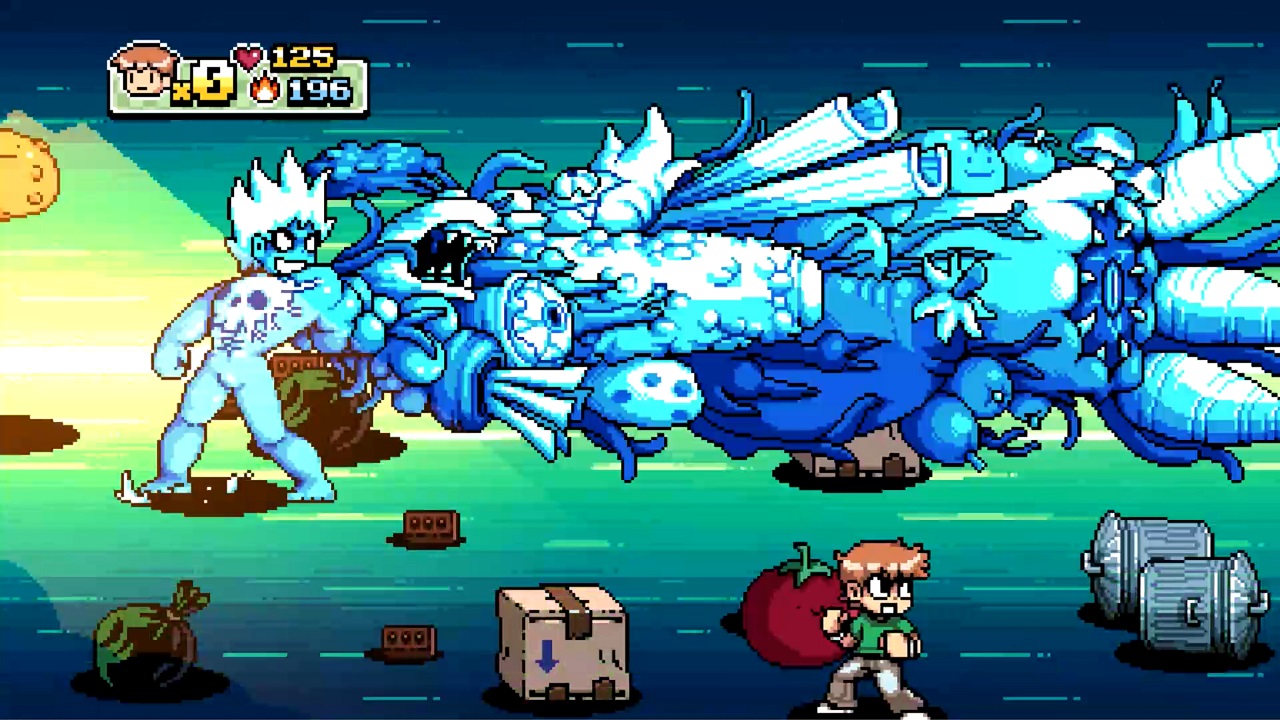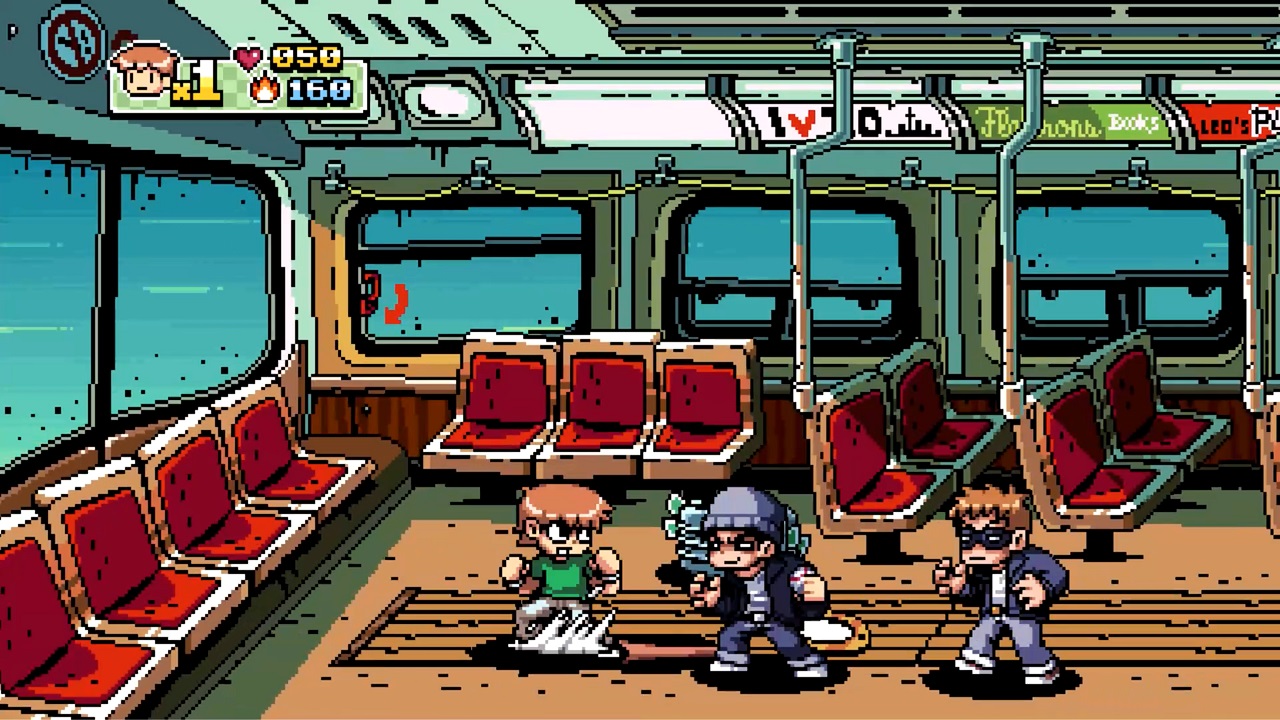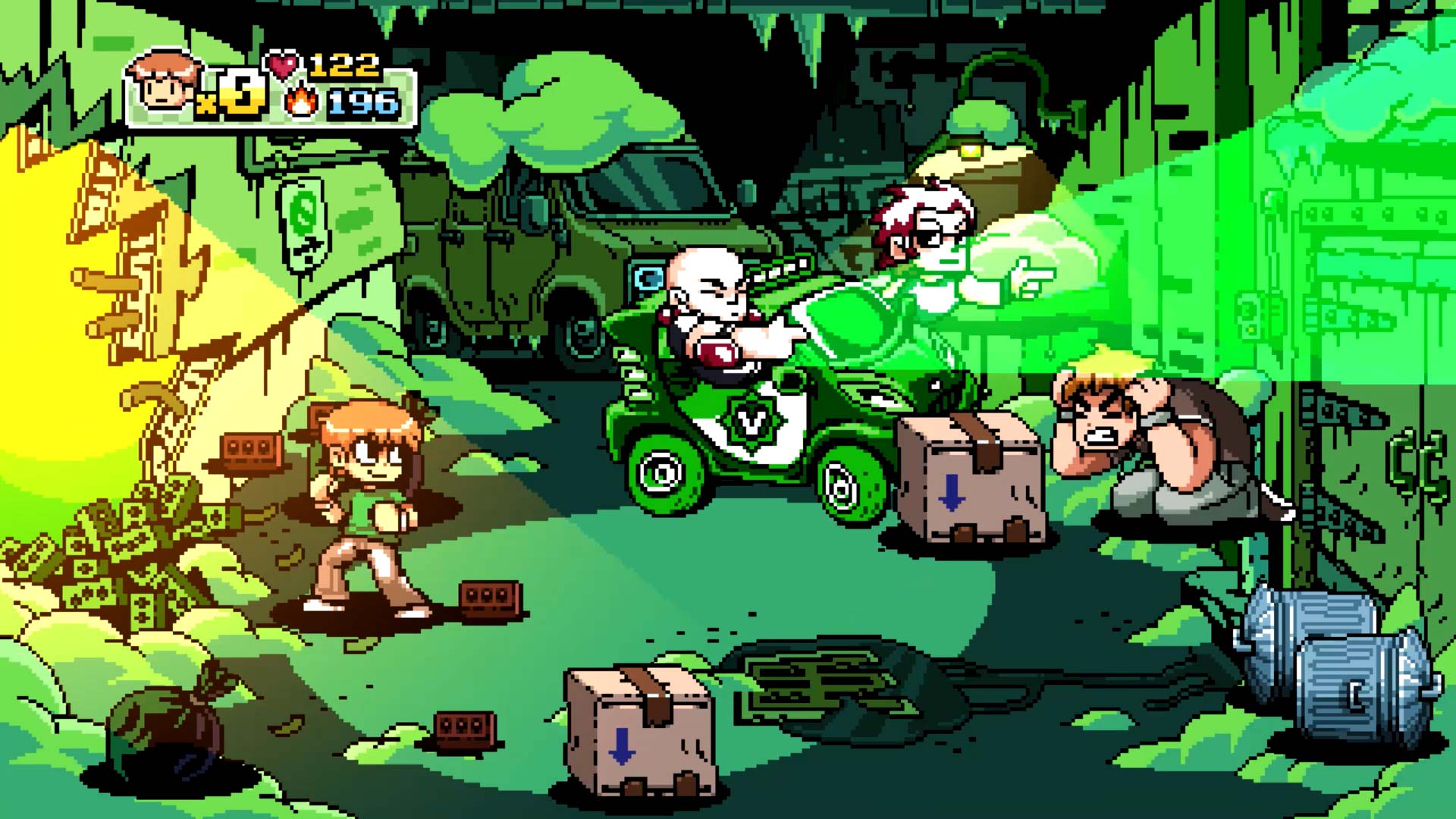
After a long, extended heyday, movie tie-in games seem to be fading out of popularity. Though we’ve moved into an era where most games based on films have real budgets behind them, from Mad Max to Indiana Jones, it seemed for a while like almost every movie was getting a cheap, thrown-together game to go along with it, and many turned out to be as low quality as they were low effort. 2010’s Scott Pilgrim vs. The World: The Game bucked this trend at its original release, and the persistent strength of its cult following made it one of the most memorable movie tie-in games of its generation. Not only did its related film actually have video game elements that made a tie-in game sensible, but it was ultimately a good game in itself.
Now, over a decade later, the Complete Edition brings it all back in a package that has held up surprisingly well. A few design choices show the game’s age, but fans of the original will be happy to pick up right where they left off, and even those who never played it will find a satisfying and energetic beat-em-up that stands up there with the best brawlers in recent memory.
"A few design choices show the game’s age, but fans of the original will be happy to pick up right where they left off, and even those who never played it will find a satisfying and energetic beat-em-up that stands up there with the best brawlers in recent memory."
One of the things that set Scott Pilgrim vs. The World: The Game apart from its movie tie-in counterparts is how refreshing its gameplay truly was. Instead of capitalizing on tired tropes, it went the way of the 2D beat-em-up brawler, one of gaming’s most historically significant yet recently underutilized genres, and the gameplay feels as good today as it did years ago. Even with games like Streets of Rage 4 and Battletoads giving the genre signs of life, this is right up there with some of the best beat-em-up gameplay in the genre, movie tie-in or otherwise.
The actual beating up of the countless goons is immensely satisfying, especially once you’ve leveled yourself up and can start to feel invincible. Regular attacks pack a hard punch that are expressed enjoyably in characters’ animations, and there’s just enough variation in characters’ move sets to keep it from getting too stale too soon, even if your movement can feel comically slow before you’ve substantially leveled up. Your block can negate just about any damage, too, which feels a little broken at times but gives you the great equalizer when you’re pitted against a dozen enemies.
You can play the story either alone or in local or online co-op using multiple characters from the movie, including Knives and Wallace, who were added as DLC to the original. At the outset, you aren’t given your entire arsenal of attacks. Instead, you begin with just a regular punch and special attack, and as you level up, you unlock more attacks that add to your repertoire. This system is interesting in its progression but somewhat frustrating in its restriction of organic learning. Introducing more attacks as you might need them in later levels is an interesting dynamic because it forces you to learn the basics before ever being allowed to use the more powerful moves, but it does take away from the time you could be spending truly mastering your character’s moves in preparation for those later levels when you need to put them together.
"Introducing more attacks as you might need them in later levels is an interesting dynamic because it forces you to learn the basics before ever being allowed to use the more powerful moves, but it does take away from the time you could be spending truly mastering your character’s moves in preparation for those later levels when you need to put them together."
Unlocking a move during a fight or within a level almost encourages you to heavily favor that new attack instead of organically using it in tandem with the others. Every attack still feels great, whether it’s the basic punch or some more powerful combos, but late additions to combat feel somewhat out of the blue. Plus, not having uniform leveling for all characters forces you to replay from the beginning if you want to try a new one, which feels regressive when you’re so far deep into the combat and the characters have so little that truly separate them in practice. You can also use these characters in other game modes, from Dodgeball to a Boss Rush, but these are highly insubstantial and really only for people who have completely perfected the main game, since the campaign is easily the best and most complete mode here.
Ironically for a game following a linear film plot, one of the game’s strengths is its replayability and encouragement of moving back and forth between old and new levels. Having new abilities allows you to go back to old areas that might have given you a tough time on your first go but you can now beat without breaking a sweat. What encourages this is the money system, where defeated enemies and other static objects in the environment can drop money, which you can use to buy various items from shops throughout each level.
Each shop has its own unique set of items that go for costs ranging from a few cents to hundreds of dollars and give either temporary boosts, like increased health on that life, or permanent boosts to your stats, and though it puzzlingly doesn’t tell you an item’s boosts before you buy it, it’s safe to reason that more expensive items are more powerful. It’s initially confusing that your personal stats, like Strength and Speed, don’t level up when your character levels up, which might leave you wondering why you’re still doing minimal damage after a few levels, but understanding the mechanics themselves is part of the game’s nuance. Because every shop only appears in its specific level location, you don’t have the luxury of finding any item at any shop or any upgrade screen. Instead, if you want an item, you need to find it back in its exact spot, which gives the motivation to go back to those old levels and get through them again and again.
"Every attack still feels great, whether it’s the basic punch or some more powerful combos, but late additions to combat feel somewhat out of the blue."
Doing this retreading is almost certainly necessary unless you know exactly where every item is on your first go, as the game can start to get brutally difficult if you’re not properly leveled up. In your progression through the levels, which can start to feel unending if you’re not familiar with the layout, your initial three lives are unlikely to last you very long on your first run, especially when you get to the level’s final boss. Sometimes the game floods you with what feels like way too many enemies that can do way too much damage and can turn into a frustrating inevitable death and restart situation, but you do ultimately figure it out. Going in with the understanding that you’re going to take a beating on your first run makes it a little easier to stomach, though it’s never fun to get your teeth kicked in. When you do get the hang of backtracking and leveling up, though, you get that all too rewarding feeling of pummeling enemies that once did the same to you and getting the satisfying KO as you take down the boss.
Story-wise, you effectively follow the plot of the movie, separated into seven levels that correspond to each of love interest Ramona Flowers’ seven evil ex-boyfriends. The game seems to operate under the assumption that you’ve seen the movie, so, even though it follows the same overarching plot, you should probably watch the movie if you’re particularly interested in the plot, though it is intriguing in how well it’s told in a voiceless, 8-bit form. You navigate through each level and more or less recreate the boss fights with each of Ramona’s ex-boyfriends in the locations they happened, and the boss fights are easily the best sequences in the game. Not only are they great recreations of the action-packed movie scenes, but they’re the most diverse and rewarding parts of gameplay, as each boss has its own strengths and weaknesses that don’t always match other, more common enemies.
The environments themselves are diverse, too, especially for the bosses. You’ll recognize the back alley where you fight Todd or the skateboard-heavy movie set where you fight Lucas, and even the stages preceding the bosses, though not groundbreaking in their snowy neighborhoods, are diverse between levels and make each feel distinct. They all have nods to the movie around every corner, giving fans a little more of a reward for paying close attention. Rounding out the whole package is the timeless incredible soundtrack from Anamanaguchi that gives every moment the feeling of energetic fun that pervades the entire game. It’s the perfect backdrop to this experience and still one of the best soundtracks of its generation, still holding up years later.
"The game seems to operate under the assumption that you’ve seen the movie, so, even though it follows the same overarching plot, you should probably watch the movie if you’re particularly interested in the plot, though it is intriguing in how well it’s told in a voiceless, 8-bit form."
It’s hard to believe it’s been over a decade since Scott Pilgrim vs. The World: The Game was first released, but even now it’s still one of the best and most significant movie tie-in games I’ve played. It doesn’t hurt that its corresponding film has so many video game elements to it, but the game isn’t just great for its subgenre; it’s a great beat-em-up altogether. Its progression system isn’t perfect and its combat can quickly become overwhelming if you’re not careful, but the gameplay is as fluid and satisfying as many other great brawlers on the market. This is the type of movie tie-in that makes the concept feel acceptable, making good on the promise that what’s up on the big screen would actually be fun to play.
This game was reviewed on the PlayStation 4.
Fluid gameplay; Unencumbered backtracking; Incredible soundtrack; Diverse boss fights.
Attack leveling system; Confusing stat upgrades.


















